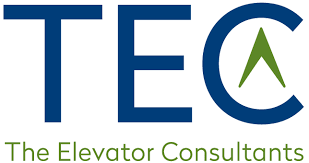Now that you’ve decided to modernize your elevator, what next? Elevator modernization can be daunting and expensive for building owners and property managers. The first thing a building needs to do when faced with modernization is commit to a budget. Whether it’s a loan, allocated capital expenditure, or other scenario, the building must be sure they have the money to modernize. Remember, the benefits of modernizing your building’s elevators can far outweigh the costs.
Choosing the Right Elevator Contractor
Once the financing and budget are in place, the next step is to choose the right elevator contractor. Making the right choice of an elevator contractor is a critical aspect of your modernization project. Research and vet potential contractors to ensure they have the experience, license, and insurance required for the job.
Reviewing Elevator Modernization Bids
During the process, the building will typically contact 3 or 4 elevator service providers to come out to the property, assess the equipment, and provide a bid to do the modernization. Once the building receives the proposals, the owner or manager will review them to understand the best option. During the review process, things can become murky. Unfortunately, no template exists for these proposals, and no two bids are identical.
The bids are like comparing apples to oranges. Yes, they are both fruits, but that’s about it. The bids received can be entirely different from each other. The building owner incorrectly assumed the elevator service providers would provide similar bids because they are addressing the same work to replace the items needed for modernization. However, a building will always get different bids.
Evaluating Key Elevator Components
When modernization occurs, there are multiple components to look at to understand what parts can be reused, refurbished, or replaced.
Elevator Controllers
Let’s look at the controller. Are you going to replace the controller? Will you install a proprietary or non-proprietary system? What controller do I need for my building? What exactly do proprietary and non-proprietary mean? If I replace the controller, does that trigger other code upgrades I need to do? The controller is usually replaced during a modernization.
If I go with a proprietary system, it usually means that only the OEM (original equipment manufacturer) can maintain the controller until it becomes known in the industry among technicians and the needed service tool, which can be five to fifteen years or never. So, only the OEM service provider can work on your elevator or escalators, which can be costly since you may need help to obtain competitive service provider maintenance bids.
Elevator Machines
What about the machines themselves? Can the machine be refurbished, do I need to replace it, or can it be reused as is? Understanding the condition of the machine and the longevity of the machine is vital as this is another costly part to replace during a modernization. If a building owner needs to refurbish, can the machine be refurbished, and if so, who can do it? If the building owner needs to replace the machine, what type will be used, and what are the pros and cons? Also, what are the benefits or drawbacks of a geared or gearless machine, and is the building the proper application right for one versus the other? Understanding all aspects of the machine and its use is essential.
Elevator Doors
Pay attention to the elevator doors. Because elevator doors are constantly in use and often abused, they are essential to modernization. What do I need for my elevator doors? Hoist way doors only? Is there a door package that is best practice for usage that the building should use in the modernization?
Work Performed by Others
Another critical factor that buildings need to remember during the modernization is the work performed by others—be sure to include electrical work, fire life safety, and others as required. This is often left for the building and should be part of the modernization. This common area can lead to costly change orders and unknown costs. The elevator service companies will typically leave this step out of their bids, and it is up to the building to get this information.
Factors That Impact Elevator Modernization
The elevator service provider must evaluate multiple components during a modernization bid. There are several other components to consider, and they differ based on the building. Do you have hydraulic or traction elevators? What is the rise of the building? What type of building is it? Is it commercial real estate, hospital, hotel, retail, apartment building, condominium association, or other building? Is my escalator indoor or outdoor? Having the right equipment installed for the correct application is another primary consideration of equipment installed.
Seeking Expert Advice for Modernization
It is not easy to compare elevator modernization bids from various service providers. Asking someone to review the bids to determine the best one is also challenging. The person doing this must know the building and be an expert in the elevator industry. The amount of money it costs for an elevator modernization is one of the most significant expenses a building may encounter. Discussing your project with an independent elevator consultant might be a good idea.
The Role of an Elevator Consultant
Engaging the expertise of an elevator and escalator consultant can prove invaluable when modernization is needed. While initiating contact with such a consultant requires a minimal cost, the long-term benefits are undeniable. The elevator consulting firms specialize in modernization, serving as dedicated advocates to safeguard their clients’ interests.
